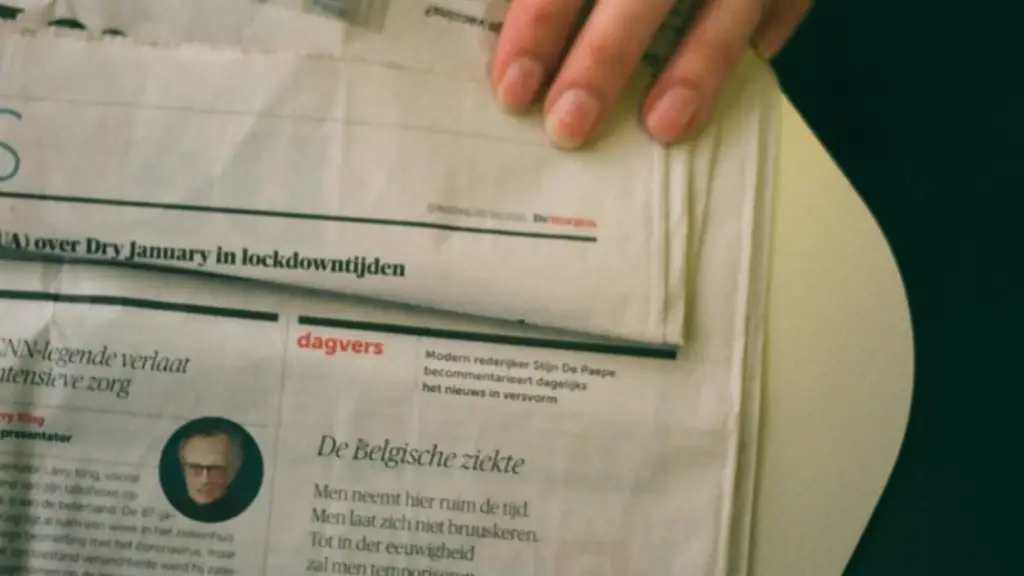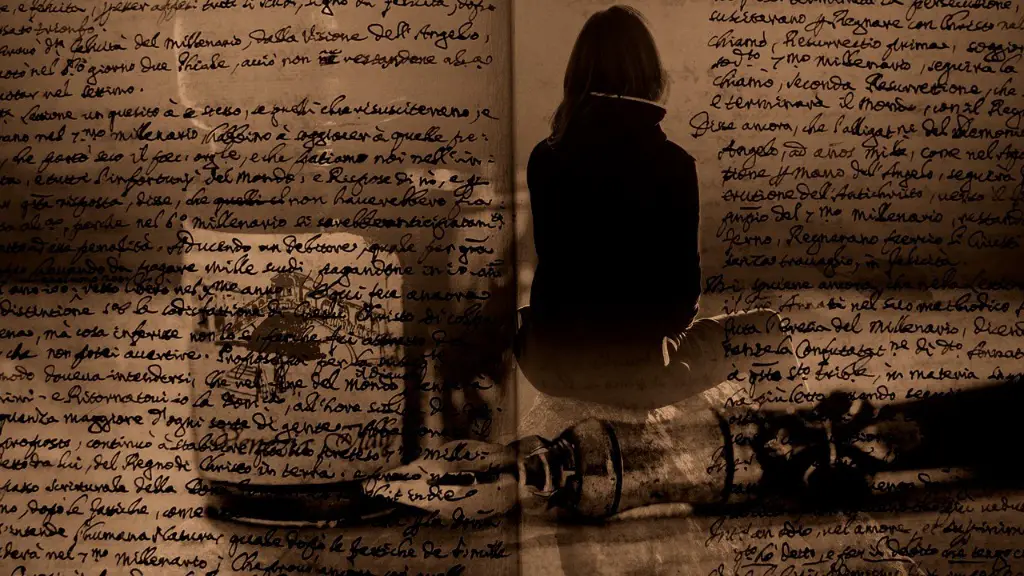Understand the Components of Poetry
Poetry is a form of literary art where writers structure words into meaningful and thoughtful compositions. While poetry does not follow a particular literary style, writers typically adhere to the Modern Language Association (MLA) formatting guidelines when writing their works of poetry. To properly write poetry in the MLA format, one must first understand the components of poetic structure, including meter, rhyme, and content.
Meter, often referred to as the “beat” of a poem, is the rhythm of a poem; it is the regular pattern of syllables and stresses in poetry. In English poetry, each line of a poem is composed of five—or sometimes six—units called feet. A foot is composed of two or three syllables and the arrangement of these syllables typically catalyzes the meter of the poem. Rhyme, in poetic composition, is the use of words similar in sound at the end of the line.
When writing a poem in MLA format, it is important to understand the artistic elements used to construct a poem, as there are specific guidelines for formatting literary works in MLA. Poetry can be written as a stand-alone work of art or can be incorporated into a larger work, such as an essay or novel.
Leverage the Essentials of MLA Formatting
To successfully write poetry in the MLA format, one must be familiar with the basic elements of MLA formatting, most notably the font and font size, page margins, indentation, and punctuation. As indicated by MLA style guidelines, the font used to write an MLA formatted paper should be legible and size 12. The entire document should use 1” margins and all prose in the document should be double-spaced. Additionally, the text should be left-justified.
When explicitly formatting the poem itself, each line of the poem should begin with a ¼ inch indentation. For example, if the poem was being incorporated into an essay, each line of the poem should begin with a ¼ inch indentation from the left margin, but if the poem is being written as a stand-alone work, the entire poem should be centered on the page. Additionally, line breaks should be included between stanzas, and the text should be free from any adornments, such as underlining, italicizing, or bolding the poem.
Pay Attention to Punctuation and Capitalization
When writing in MLA format, it is important to adhere to the guidelines of capitalization and punctuation as established by the MLA’s writing guidelines. The titles of poems should be capitalized and italicized, as should all major words, including nouns, pronouns, adjectives, verbs, adverting, and prepositions. When it comes to the usage of punctuation, a poem should not contain any periods at all, and commas, colons, semicolons, and dashes should be used judiciously.
Special attention should be given to the use of quotation marks in a poem. Quotation marks should only be used if indicated by the poem itself. This means that any words or phrases that are part of the dialogue within a poem should be enclosed in quotation marks; all other words should remain without quotation marks.
Understand MLA Citation Guidelines
If the poem being written is incorporating outside sources and ideas, the poet should include an in-text citation and a reference list at the end of the poem in the MLA format. The MLA’s 8th edition style guide outlines the guidelines for citing sources in an MLA-formatted paper.
In an in-text citation, the poet should include the family name of the author and the page number of the source in parentheses after referencing the source as part of his or her poem. The poet should place the parentheses immediately after the source has been referenced, but not in the middle of the idea. Additionally, the poet should not include the word “page” in the in-text citation, as the page number should be sufficient. If an individual does not know the author’s family name, the full title of the source referenced should be included, and the year of publication should be included in the parentheses directly after the title.
At the end of the poem, the writer should compose an alphabetized source list, excluding any sources specifically referenced in an in-text citation. If a book is being referenced, the family name of the author should come first and the year of publication should come last. If a web page is being referenced, the title of the web page should come before the family name of the creator. As opposed to an in-text citation, all major words in the title of the sources should be capitalized.
Adhere to Common Guidelines of Poetry
When writing a poem, it is important to remember to adhere to standard rules and structures that are specific to poetry. As indicated by MLA writing guidelines, a poem should never contain an excessive amount of dialogue. Additionally, complex sentence structures and elaborate descriptions should be used sparingly, as they can be difficult to comprehend. Common poetic devices such as rhythm, rhyme, irony, and metaphor should be used to emphasize the poem’s message and should be provided with careful consideration.
Analyze the Poetry for Clear Meaning
When writing a poem, it is important to keep in mind that the purpose of the poem is to convey a clear message to the reader. The poet should provide sufficient detail so that the reader can gain a thorough understanding of his or her poem. It is also important that the poet make sure his or her poem is devoid of vague or abstract language as well as any confusion or ambiguity.
To ensure his or her poem is meaningful, the poet should analyze the poem to confirm its clarity and coherence. If the poem is being written to describe a specific place, event, or person, the poet should ensure that enough information is provided that outlines the setting, the plot, and the characters. Additionally, the poet should not make any assumptions about the reader’s understanding of the poem, as readers come from different backgrounds and experiences.
Proofread the Poem for Grammatical Accuracy
Before submitting the poem for publication, the poet should make sure that the poem is free from any structural or content errors, such as typos, incorrect verb tenses, and misused words. The poet should utilize the spell-checker within the word processor and read the poem out loud to identify any errors that may have been overlooked. The poet should be sure to utilize the MLA format as a guide when proofreading the poem, keeping an eye out for any incorrect citations or formatting errors.
Integrate Poetic Figurative Language In Poetry
A successful poem tends to tell a story that the reader can relate to. To ensure the poem resonates with readers, the poet should make use of poetic devices such as figurative language. Figurative language enhances the poem’s message by incorporating descriptions, figures of speech, and word play. Examples of figures of speech include similes, metaphors, and personification. These devices serve to create a vivid, imagery-filled poem that leaves an impactful mark on readers.
Engage the Reader and Foster an Emotional Connection
Engaging the reader is an important element for a successful poem. To engage readers, the poet should focus on writing in a way that is approachable and accessible. In addition to writing with a conversational tone, the poet should also make sure to choose words with sincere emotion that are able to evoke deep connections with readers. Additionally, the poet should make sure to use vivid language that can paint an image in the reader’s mind.
Introduce Variations in Poetic Structure
The poetic structure of a poem can be used to great effect in order to create a unique and dynamic poem. The poem can involve variations of rhyme, meter, and topic. To create variety in the poem, the poet should make use of a range of meters and rhyme schemes throughout the poem and switch up the topic of the poem between lines. Doing so can help create a captivating, aesthetically pleasing poem that readers enjoy.
Encourage Critical Thinking in Poetry
Critical thinking is an essential element in many types of literature, including poetry. To ensure that readers engage in critical thinking while they read, the poet should incorporate complex questions and variances in their poem. Asking questions that force readers to come up with their own conclusions can create an intellectually stimulating poem that leaves the reader with thoughts to ponder after they have finished the poem.


